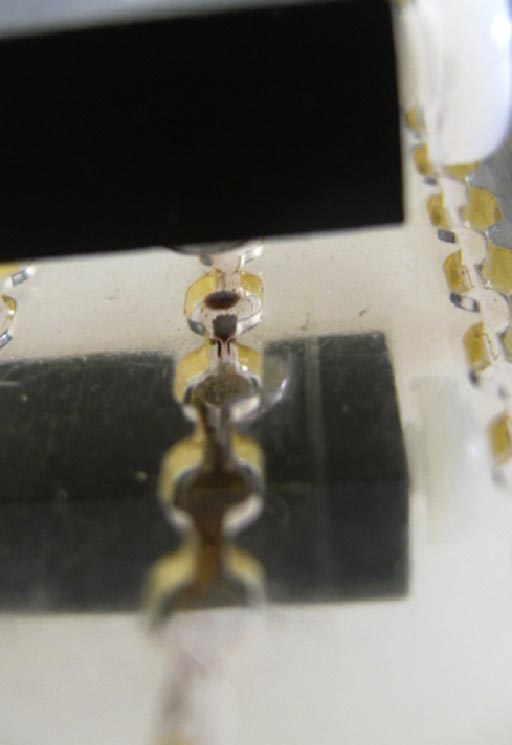Lab-on-a-Chip Platform Designed for Detection of Pathogens
By LabMedica International staff writers
Posted on 04 Apr 2017
A team of German bioengineers has developed an integrated and automated lab-on-a-chip platform for sample preparation and nucleic acid-based detection of pathogens in various liquid media.Posted on 04 Apr 2017
Since DNA-based detection of the pathogens in liquid samples demands many complex steps, various pieces of equipment, and experienced personnel, investigators at Fraunhofer Institute for Cell Therapy & Immunology developed an innovative prototype lab-on-a-chip platform capable of automating the process in a single instrument.

Image: Controlling magnetic nanoparticles through a microfluidic chip – produced by the rapid prototyping method – with the aid of magnets that are arranged above and below the microfluidic chip (Photo courtesy of the Fraunhofer Institute for Cell Therapy & Immunology).
The system includes a microfluidic cartridge (lab-on-a-chip) and an external tabletop instrument. The simple linear design of the cartridge is based on stationary microfluidics, which does not require valves or actuators. This concept is realized via the implementation of functionalized magnetic beads for pathogen isolation and DNA extraction.
The external instrument manages bead transportation and temperature control in the reaction chambers in a user-independent mode, and the user-friendly software allows adjusting these processes as required. The detection of the amplified product is performed with a LED-based optical unit that provides the readout of the fluorescent signal.
The investigators demonstrated proof-of-concept by detecting E. coli and Salmonella as two model pathogens in spiked liquid samples via loop-mediated isothermal amplification (LAMP) and PCR. They worked with one-milliliter samples but stated that this volume could be easily scaled up.
"We were motivated by the existing need for making the molecular analysis of complex samples much simpler for the users," said first author Dr. Natalia Sandetskaya, a researcher in the nanotechnology unit at Fraunhofer Institute for Cell Therapy & Immunology. "Our particular applied interest is the detection of the pathogens in blood; for instance in sepsis, when only a few microorganisms must be rapidly found in a large volume of blood. Although our current prototype of the platform will need further development for this application, we have already demonstrated a high level of integration of very diverse processes without making the system overly complex."
Details of the device were published in the March 22, 2017, online edition of the journal Future Science OA.













